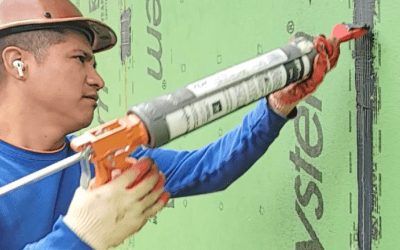Older Houses are leaky and expensive to operate.
Just a few blocks over from the #1920sMakeoverATL, one of our clients used to live in a 100 Year Old House. We were building a new EarthCraft House, and energy efficiency and comfort were the motivating factors for wanting to build green. In their old house, they were spending over $1000 to “NOT freeze.” Even with the heat on full blast, they were unable to meet a basic comfort threshold since they still had to layer up their clothing to stay warm.
Since then, energy costs have only increased, so I can imagine their old house cost much more in utility costs. According to the modeling by energy experts at LG Squared, the #1920sMakeoverATL is about the same size as that old house and is projected only to have $150 or so on average per month. This house was very leaky before we started, and we could air-seal the sheathing alone to meet the Passive House standard.
Air Sealing is Key to Energy Efficiency
What baffles me is that air sealing of one the cheapest things for a builder to do, yet so many fight these mandates. They are not even that tough in Georgia since the state has relaxed the standard from 3.0 ACH50 to only have to reach 5.0 ACH50. ACH50 is a way to measure the leakiness of a house. A very tight house is less than 1 ACH50 and most older houses start at 15 ACH50We were able to get to .3 ACH50 with Huber Zip Panels and liquid flashing alone. Builders can easily reach 3 or 5 ACH50 just by sealing the joints in the sheathing. Most are fighting this because other methods of air sealing are more complicated and costly.
We partnered with Huber and Corbett Lunsford to run a series of tests on the #1920sMakeoverATL to prove that you can meet code and Passive House air-sealing requirements with a caulk gun and sealant! Without the sealant, the house, with only sheathing, measured at 14 ACH50. With the sealant, it measured at .3 ACH50. We could reduce it so much by adding the sealant on all of the seams in the sheathing. This means that the energy bills will be less, and the cost of an HVAC installation will be less since we can install a smaller system. If we had done nothing to seal up the house and left it at the original number of over 20 ACH 50, the HVAC system would have been seven times as large, which would have cost more to install and operate.





